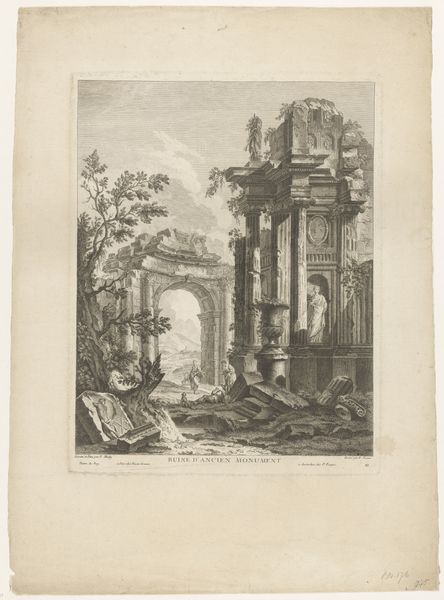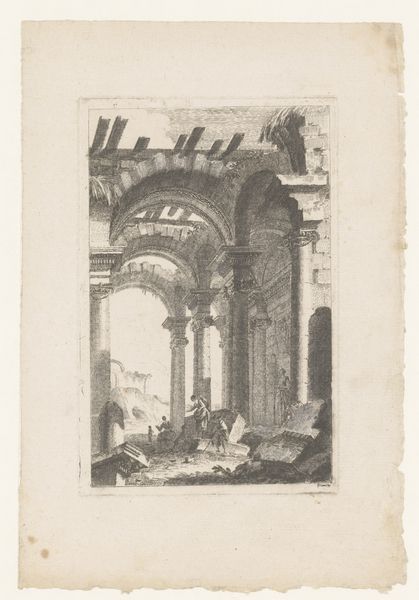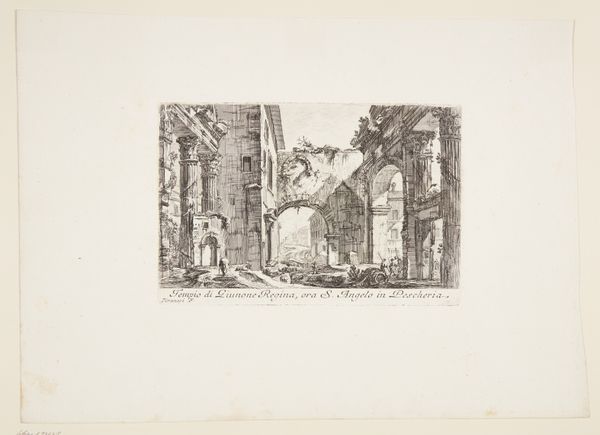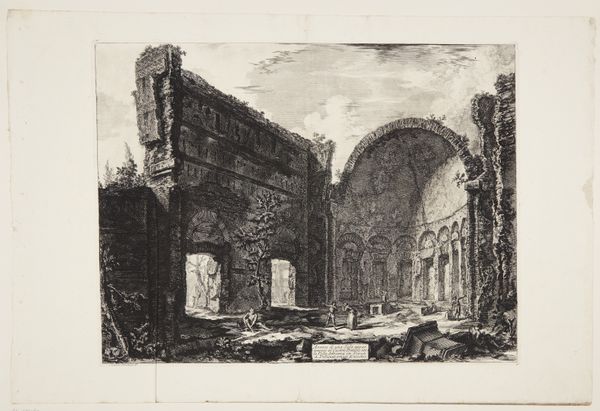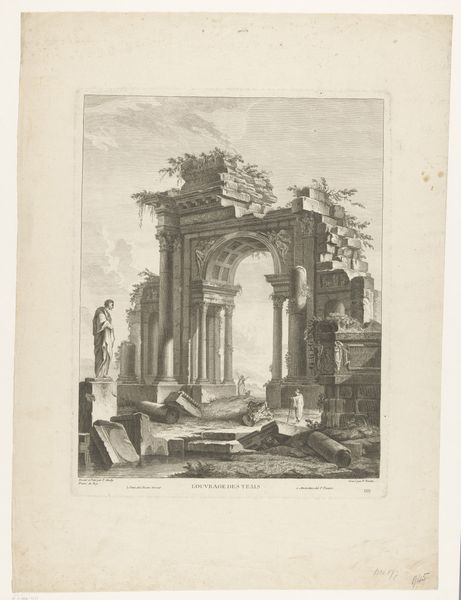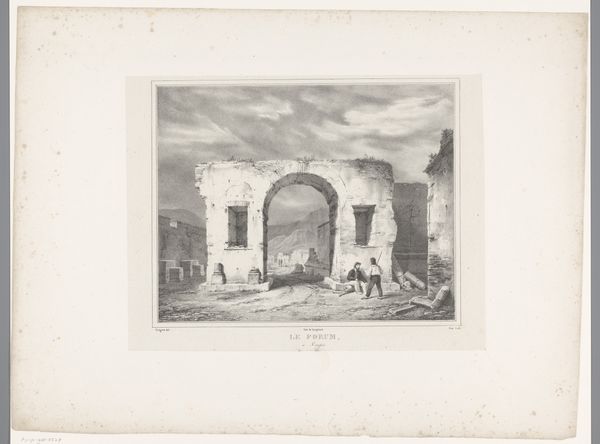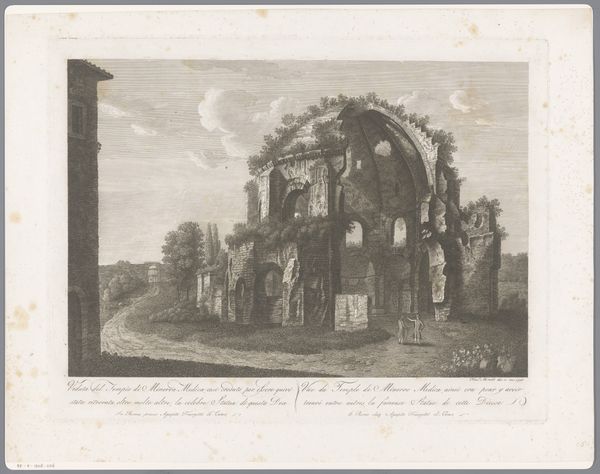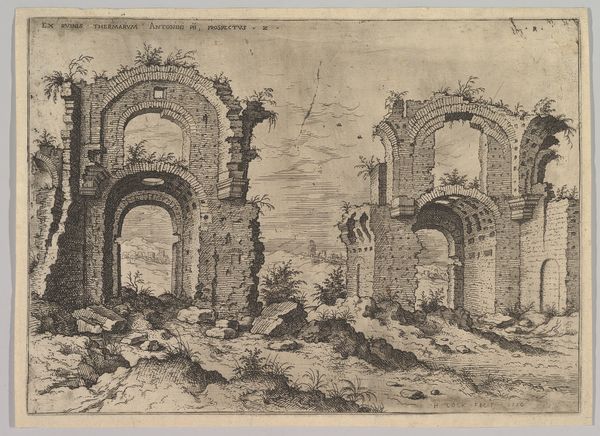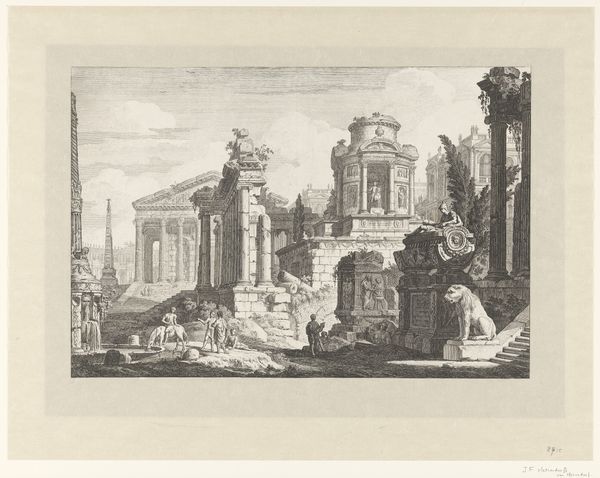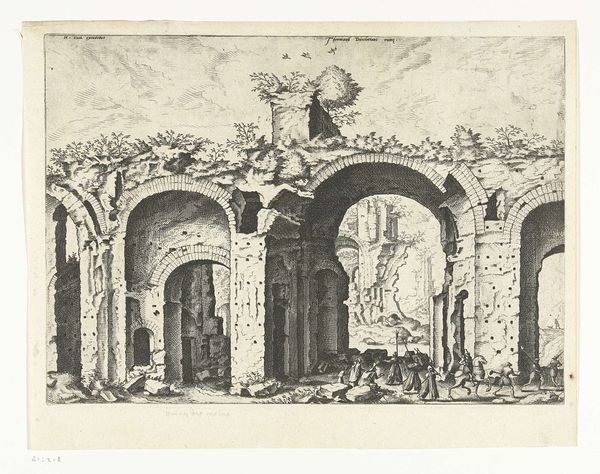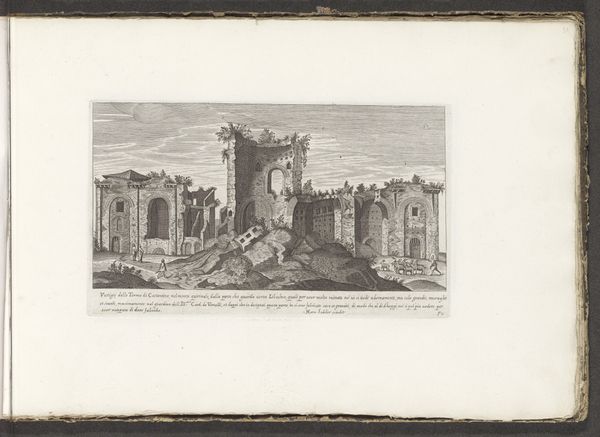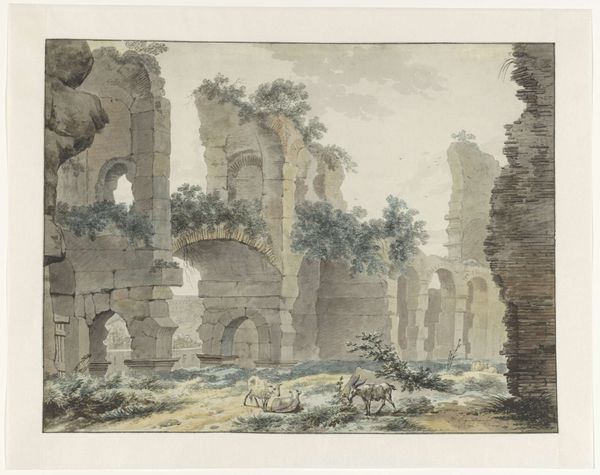
print, engraving, architecture
#
baroque
# print
#
old engraving style
#
landscape
#
history-painting
#
engraving
#
architecture
Dimensions: height 420 mm, width 526 mm
Copyright: Rijks Museum: Open Domain
Editor: So, here we have an engraving from between 1704 and 1724, titled "Gezicht op de Vredestempel, te Rome" – or "View of the Temple of Peace, in Rome". It’s currently held at the Rijksmuseum and is by an anonymous artist. The ruined architecture and the tiny figures really emphasize the vastness of time and the decay of empires. What jumps out at you when you look at this print? Curator: It strikes me as a carefully constructed image intended for public consumption. Prints like these played a crucial role in shaping perceptions of Rome's past, especially for those who couldn't travel. Think about how the artist has framed the ruins, focusing not just on the architecture but on the implied narrative of decline and the passing of time. It begs the question: who was this image intended for, and what message was it supposed to convey about power and its impermanence? Editor: That’s a good point. Was there a particular political angle these artists usually took? Curator: Frequently. Visual representations of ancient Rome were never neutral; they often served as commentary on contemporary society. By highlighting the ruins, artists and their patrons could subtly critique current political situations, drawing parallels between the fallen empires of the past and the potential pitfalls of the present. Were they simply documenting ruins, or making a point about the present through the past? Editor: That's fascinating! I hadn't considered the commentary aspect so directly. It reframes the image entirely. Curator: Exactly! It is less a straightforward landscape and more a public reflection on the nature of power and memory. I'm glad we took a closer look.
Comments
No comments
Be the first to comment and join the conversation on the ultimate creative platform.

